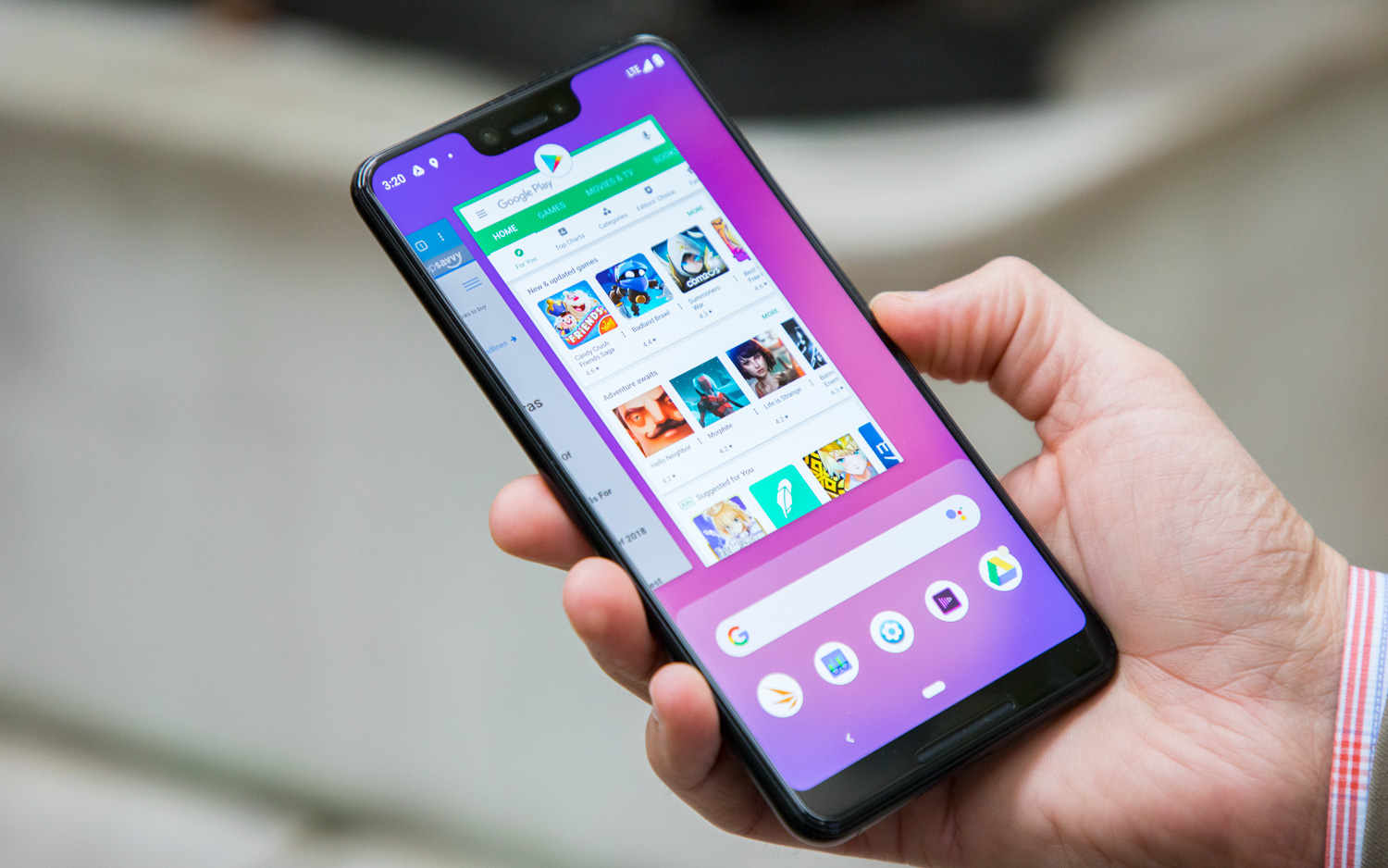Here's When Your Phone Is Getting Android Pie In 2019
Everything you need to know about updating your Android handset to the latest iteration of Google's mobile OS.
Google Pixel and Essential Phone users are already stuffing their faces with some Android Pie. And while there’s incoming support for many A-List models out there, we're still waiting for updates on some devices from the likes of Samsung, Motorola, Sony, Nokia and HTC and others.
Here's a list of Android device makers and their software plans. We'll continue to amend this list as more companies commit to the new software.

Last updated Feb. 11 with additional information on Samsung's update roadmap.
Interestingly, the midrange ZenFone 5 already received Android Pie in December, while the flagship 5Z is reportedly set to get it in January. Aside from the 5Z, Asus hasn't confirmed when its other devices, like the ROG Phone and ZenFone 5Q (known as the ZenFone 5 Lite outside of the U.S.) will see the update.
Asus phones confirmed to get Android Pie
- ZenFone 5Z
- ZenFone 5
Essential
Get instant access to breaking news, the hottest reviews, great deals and helpful tips.
If you own an Essential Phone, congratulations — you were one of the first to get Android Pie. Essential pushed out an update to Android Pie on Aug. 6, the same day Google published its updates for first and second-generation Pixel devices.
New versions of Android always debut on Google's phones first. In Android Pie's case, the update released on the same day in August for the Pixel, Pixel XL, Pixel 2 and Pixel 2 XL.
Note that this will be final software update for the first-generation Pixel range, as those devices reach end-of-life status. However, they will still receive security updates until fall 2019. Meanwhile, starting with the Pixel 2, Google committed to three years of software support for its handsets. That means Google's current flagships will not only see the impossible-to-nickname Android Q next year, but eventually Android R in 2020.
Google phones with Android Pie
- Pixel 3 XL
- Pixel 3
- Pixel 2 XL
- Pixel 2
- Pixel XL
- Pixel
HTC
In a tweet, HTC promised Pie updates for four devices. So far, the only one that has received it is the Android One version of the HTC U11 Life — not to be confused with the version released with HTC's Sense UI, which apparently will not get the new software. No timeframe has been provided for the other models at the time of writing.
HTC phones with Android Pie
- HTC U11 Life (Android One edition)
HTC phones confirmed to get Android Pie
- HTC U12+
- HTC U11+
- HTC U11
Motorola
Eight of Motorola's handsets will eventually see updates to Android Pie when all is said and done. Yet as of Jan. 2, the phone maker has only made good on two of them: the Motorola One Power and Moto X4. At some point, those devices should be joined by recent flagships, such as the Moto Z3 and Moto Z3 Play, as well as less expensive offerings like the Moto G6 line. You can check the full list of supported devices on the manufacturer's website. The Moto G5 series will miss out on Android Pie, as Motorola only issues a single year of updates for its budget models.
Motorola phones with Android Pie
- Motorola One Power
- Moto X4 Android One
Motorola phones confirmed to get Android Pie
MORE: Android 9 Pie Review: Google's OS Gets Smarter
Nokia
According to a tweet from HMD Global, which operates the Nokia brand, Android Pie will be available for every device in the company's current range, from the Nokia 3 to the Nokia 8. The Nokia 6.1 and 7.1 led the way with updates in November. As far as the remaining devices are concerned, timing will vary by country and network operator.
Nokia phones with Android Pie
Nokia phones confirmed to get Android Pie
- Nokia 8
- Nokia 6
- Nokia 5
- Nokia 3
OnePlus
All of OnePlus' 2017 and 2018 phones should now have Android Pie underpinning the latest OxygenOS release, with the OnePlus 5 and 5T joining the party in December. There's no indication the OnePlus 3 or 3T will be a part of the rollout, though we'll update this list if anything changes.
OnePlus phones with Android Pie
- OnePlus 6T
- OnePlus 6
- OnePlus 5T
- OnePlus 5
Samsung
Samsung finally began delivering Pie updates in January — albeit with a catch. First to come, strangely, was the Galaxy S9 and S9+ for Xfinity Mobile customers exclusively on Jan. 29, followed shortly after by the T-Mobile models on Feb. 11. As far as other carriers and unlocked models are concerned, it seems users will simply have to hope for the best in February.
Hopefully around then we'll have the whereabouts of the Galaxy Note 9 and Note 8's updates as well, which were also originally pegged for a January launch. Afterwards, Samsung plans to deliver Pie on the S8 and S8+ in March, and the Tab S4 in April.
It's important to point out that the introduction of Android 9 on will also mark the beginning of One UI — the company's new interface that is designed to improve usability on modern phones with big displays. To this point, we haven't yet seen what form One UI will take on Samsung's tablets or its midrange or low-end handsets. Those devices should see Pie beginning in April, with the bulk of updates dropping over the summer and then the Galaxy Tab A series wrapping things up in October.
MORE: Samsung One UI Hands-On
Samsung phones with Android Pie
- Galaxy S9+ (T-Mobile, Xfinity)
- Galaxy S9 (T-Mobile, Xfinity)
Samsung phones confirmed to get Android Pie
- Galaxy Note 9
- Galaxy S9+ (other carriers; unlocked)
- Galaxy S9 (other carriers; unlocked)
- Galaxy Note 8
- Galaxy S8+
- Galaxy S8
- Galaxy A9 series
- Galaxy A8 series
- Galaxy A7 series
- Galaxy J8 series
- Galaxy J7 series
- Galaxy Tab S4 10.5
- Galaxy Tab S3 9.7
- Galaxy Tab A (2017)
- Galaxy Tab A 10.5
Sony Mobile has made a name for itself in recent years, often being one of the first manufacturers to update its phones to the latest versions of Android. Thankfully, that hasn't changed with the release of Android Pie. Owners of Sony's recent flagships — comprising the Xperia XZ2 and XZ1 lines — already began seeing updates way back in November. Those with lower-end Xperia XA2 handsets will have to wait until March.
Sony phones with Android Pie
- Xperia XZ3
- Xperia XZ2 Premium
- Xperia XZ2
- Xperia XZ2 Compact
- Xperia XZ1
- Xperia XZ1 Compact
- Xperia XZ Premium
Sony phones confirmed to get Android Pie
- Xperia XA2 Ultra
- Xperia XA2 Plus
- Xperia XA2
What about the rest?
Some other neat Android phones will probably get updates too, at least according to the Android beta logs. Those include the Xiaomi Mi Mix 2S, Oppo R15 Pro, and Vivo X21. As for Huawei, the latest version of the company's Android front end, EMUI 9, just started reaching some devices, including the Mate 10 Pro, Huawei P20 and Honor View 10, in December. EMUI 9 is built on top of Android Pie.
The bad news, as many Android users know too well, is that the emergence of a new version of Android has very little bearing on when it'll actually arrive on your phone. Google publishes a final version of the software, but it's up to device makers to package that into updates for their respective users.
That said, the situation is a little better than it used to be, thanks to an initiative dating back to the Oreo days called Project Treble. Treble separates the core Android experience Google produces with the extra features, optimizations and UI elements hardware makers typically add. That means updates can be pushed out to existing phones seamlessly, without causing chaos for manufacturers. And of course, less headaches for developers typically means less time spent waiting for updates.
Because of Treble, we expect to see Pie on more devices at a quicker pace than previous releases. In fact, we're already witnessing that happen: Essential actually started pushing its Pie update to users of its PH-1 smartphone before many Pixel owners received theirs. Additionally, the Android P Developer Beta reached handsets from Sony, OnePlus, Xiaomi and Nokia day-and-date with Google's own hardware — a first for the platform.
Adam Ismail is a staff writer at Jalopnik and previously worked on Tom's Guide covering smartphones, car tech and gaming. His love for all things mobile began with the original Motorola Droid; since then he’s owned a variety of Android and iOS-powered handsets, refusing to stay loyal to one platform. His work has also appeared on Digital Trends and GTPlanet. When he’s not fiddling with the latest devices, he’s at an indie pop show, recording a podcast or playing Sega Dreamcast.
